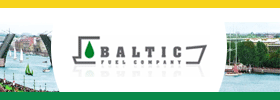Ghost tankers
The European Council has approved the sixth package of sanctions against Russia to restrict deliveries of crude oil and petroleum products from the Russian Federation. In this context, Gibson Shipbrokers experts expect some tankers currently involved in sanctioned crude exports of Iran and Venezuela to find new employment opportunities in the interests of Russia.
EU countries have agreed on introduction of the sixth package of sanctions against Russia. It “will cover crude oil, as well as petroleum products, delivered from Russia into Member States, with a temporary exception for crude oil delivered by pipeline”, according to the Conclusions of the EC meeting in Brussels adopted by the EC and published on its official portal yesterday. According to the statement, the European Council will revert to the issue of the temporary exception for crude oil delivered by pipeline as soon as possible.
Earlier imposed ban on calls of Russian ships into EU ports has had virtually no impact on trade operations: ships flying under so called convenient flags constitute over a half of the global fleet today. For example, over 30% of the global commercial tonnage is under the jurisdiction of Panama (according to Interlegal). Meanwhile, sectoral sanctions in the oil market can mean greater constraints for Russia’s commercial operations. However, in April The Wall Street Journal said that, despite the sanctions, Russia had managed to increase oil exports to Europe by 300,000 barrels per day with the supplies to certain points where Russian product is mixed with other products to make a new one which is formally not only Russian, such as the Latvian blend.
According to Bloomberg, Russia shipped about 720,000 barrels a day of crude to European refineries through its main pipeline to the region last year. That compares with seaborne volumes of 1.57 million barrels a day from its Baltic, Black Sea and Arctic ports. The agency expects a partial embargo on Russian crude oil shipped on sea to costing Russia up to $10 billion a year in lost export revenue (75% of all exports).
The Federal Customs Service says that Russia’s exports in 2021 totaled 230 million tonnes of crude oil and 144 million tonnes of oil products. According to Kommersant, supplies of oil and condensate to Europe totaled 105 million tonnes which is comparable to 20% of its production in Russia. Besides, Russia is the key supplier of diesel fuel to Europe accounting for 70% of Europe’s imports making about 40 million tonnes.
In its report “Where Ageing Tankers Go”, Gibson assumes that some of ageing tankers currently involved in sanctioned crude exports of Iran and Venezuela are likely to find new employment opportunities in the interests of Russia. Experts suppose that the lack of demolition in the larger tanker segment is due to employment opportunities for ageing tankers to move Iranian and/or Venezuelan barrels. This trend has become even more pronounced since last year, with a list of tankers associated with sanctioned trade continuing to grow, Gibson says. As of now, 12% of the existing VLCC fleet and 9% of the Suezmax fleet are linked with the Iranian and/or Venezuelan trade. Tankers involved in illicit trade represent a sizable portion of the fleet, accounting for the vast majority of vessels built in 2003 or earlier. According to the analysts, sanctioned trade operations appear to be highly inefficient, with most vessels being able to load once or twice a year, with plenty of time spent in ballast waiting to load or laden waiting to discharge. Yet, export data provides further evidence of the inefficiency of illicit operations. Kpler estimates that between May 2021 and April 2022, Venezuela and Iran exported 0.55 mbd and 0.73 mbd respectively. Assuming that all these barrels are destined to China with a 30/70 split between Suezmaxes and VLCCs, if operations were efficient, theoretically just 20 VLCCs and 30 Suezmaxes would be needed for this trade.
“International efforts to reach a compromise with Iran and Venezuela have intensified in recent months and if sanctions related to Iranian and/or Venezuelan crude exports are eased or removed, then competitive, internationally traded tankers are likely to gain dominance in this market. For the “ghost” fleet this could facilitate demolition, but with Western governments increasingly moving away from Russia, at least some of those ships are likely to find new employment opportunities,” Gibson Shipbrokers’ report says about VLCC, Suezmax and Aframax.
Russia is still the major exporter of gas to Europe. When speaking about Russian gas embargo, Belgian Prime Minister Alexander De Croo referred to it as “way more complicated” compared to sanctions imposed on oil, according to Bloomberg. In 2021, Europe’s imports of Russian gas by pipeline exceeded 380 million cbm per day on the average, or about 140 billion cbm over the year. Besides, some 15 billion cbm was imported as LNG. About 45% of Europe’s gas imports in 2021 were made by 155 billion cubic meters of gas imported from Russia.
More industry-related content is available on our social media pages: YouTube, Telegram, Twitter, Yandex Zen







